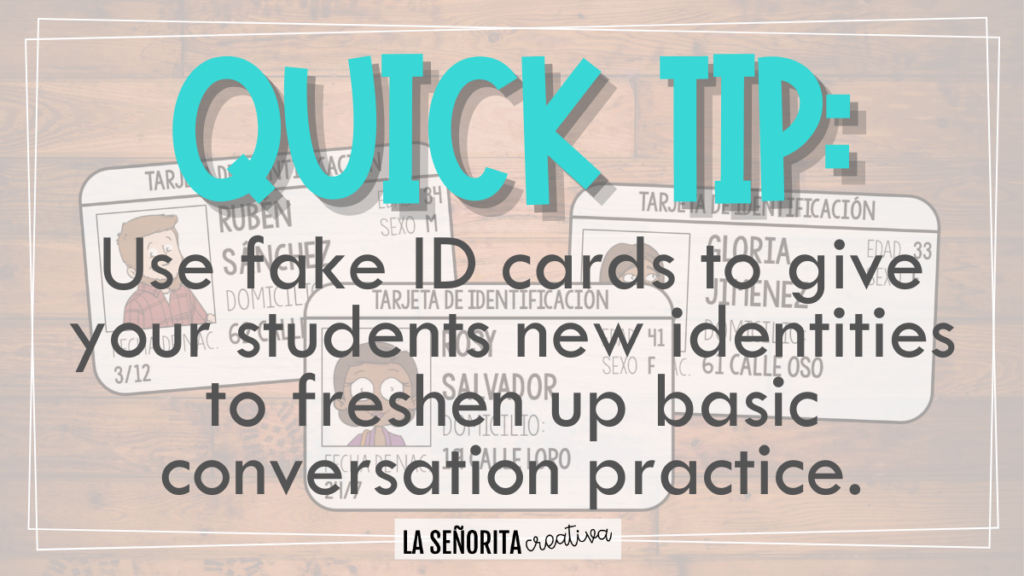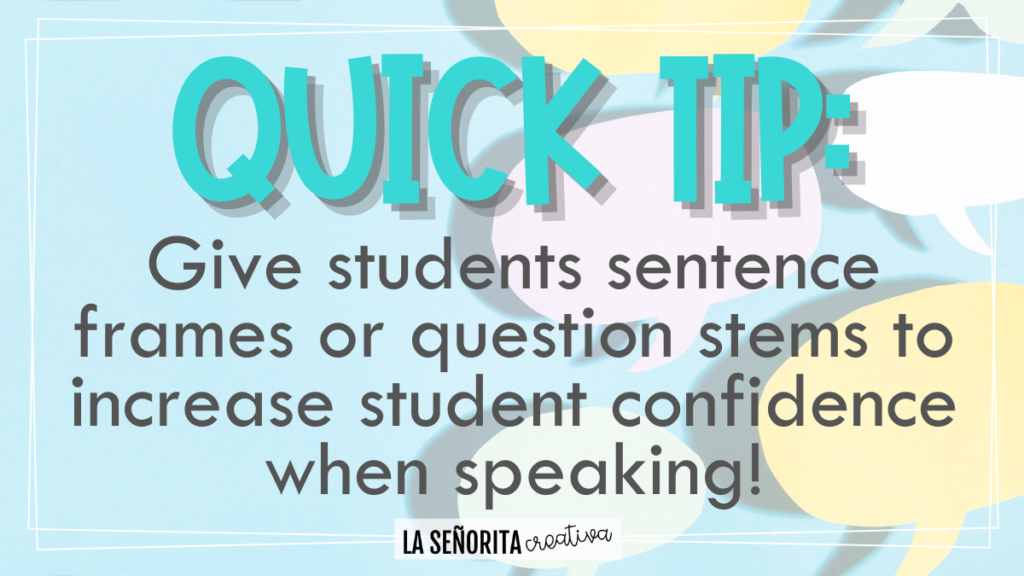
Hey everyone! I’ve been revamping some of my old lessons lately and I decided to start with greetings and formal/informal speech, since that’s something we focus a lot on at the beginning of the year. Here are three of my favorite ways to practice greetings and tú vs. usted.
1. Neckties for Tú vs. Usted

I don’t know about you, but many of my students struggle to remember the difference between tú and usted and when to use each one. Something I started doing in the last few years to help my students with this topic is passing out neckties to half of the students as they come in the room. I explain that the necktie represents someone they should use “usted” with when speaking.
When they practice talking with their classmates, the tie makes an easy symbol for them to remember to use the formal register. Not only do I use these at the beginning of the year with “basic” conversations, but I also like to break them out at different points throughout the year when they are practicing speaking with each other. You should be able to find some ties at your local thriftstore, so check there first. I was able to pick up about 20 clip-ons and loose ties for around $15. I just made sure to pre-tie any loose ties before handing them out to students.
2. ID Cards

This is one of my absolute favorite ways to practice greetings and other basic conversations at the beginning of the school year. My kids get so bored with saying their own name and information over and over again, so I made some fake ID cards to give them all new identities. I set the cards up like a (very basic) driver’s license. Each card gives a first and last name, picture of the person, age, birthdate, sex, and street address (each street has an animal name). This way, they can practice asking and answering so many of the basic questions we learn at the beginning of the year.
While these can be easy to make, they are rather time-consuming. If you want to save yourself some time, you can get a set of 32 pre-made ID cards from my TpT store here.
3. Sentence Stems and Hear/Say Cards

The last strategy I have for practicing greetings is to provide your students with sentence and question stems to make hesitant speakers feel more confident when communicating in Spanish. Two ways you can do this are brainstorming phrases and questions with your students and posting a word wall (or phrase wall). A similar method of scaffolding conversations is hear/say cards. I first saw this idea from this post by Cherice Montgomery to FLTeach a while ago. She gives some great ideas for practicing greetings, including hear/say cards. I loved this idea, so I made the example she posted into a card, as well as a different conversation. I really like that it’s a speaking activity, but it’s scripted so that scaffolding helps my students feel more comfortable with speaking at the beginning of the year. You can grab these hear/say cards for free below.
How do you practice greetings with your students?



Would love to see these cards!! (The link is not functioning!)
Thanks for the heads up! It's working now.
I loved your cards! specially because they are not just about reading them. They make kids think about a logical sequence so that they can choose the best option!